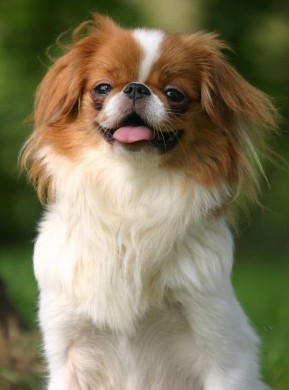Which Size Dog is Right For You?
By Michele Welton, Dog Trainer, Breed Selection Consultant, Author of 15 Dog Books
Fencing needed for confinement
Risk of Aggression Toward People
Risk of Aggression Toward Other Dogs
You shouldn't choose the size of dog you "want" – you should choose the size of dog you're sure you can provide for.
For example, Marvin and Suzi chose a tiny dog because "it's cute and doesn't take up much space." Unfortunately, they have two toddlers and an Alaskan Malamute – a terrible environment for a tiny dog.
James chose a large dog because "it looks like a real man's dog and will protect my home." Unfortunately, James lives in an apartment with no yard and limited time for exercise – a terrible environment for a large dog.
Again, you shouldn't choose the size of dog you "want" – you should choose the size of dog you're sure you can provide for.
TINY DOGS
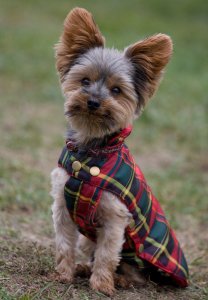
Toy breeds, like this Yorkie, have many wonderful characteristics, but you need to be aware of the problems that come with their tiny size.
TINY dogs, generally speaking, weigh up to 10 pounds and stand up to 12 inches at the shoulder.
Examples of tiny dogs
- TINY purebreds include Chihuahuas, Maltese, Pomeranians, Toy Poodles, Yorkshire Terriers, and others. See all tiny breeds.
- TINY crossbreds include the Yorkipoo (Yorkshire Terrier + Toy Poodle), Maltipoo (Maltese + Toy Poodle), Chorkie (Chihuahua + Yorkie), and other such combinations.
- TINY mixed breeds (3+ breeds) – you won't find too many mixes in this size range. It's not a natural size for canines (too fragile) so it seems as if Mother Nature arranges for mixed pups to be a slightly larger/sturdier/safer size.
Pros of tiny dogs
- TINY dogs have full-fledged canine personalities packed into a miniscule body.
- They don't need too much exercise.
- They're easy to pick up and carry.
- They're easy to clean up after.
- They're convenient to travel with.
- They're physically easy to control.
- They usually enjoy a long lifespan of 13-16 years old.
Cons of tiny dogs
Many owners acquire tiny dogs when they should NOT.
- TINY dogs can be hard to keep safe. They get stepped on, sat on, squeezed too tightly, or hit on the head by a falling object. They jump from your arms or fall off the bed. They choke on things. They're stomped on by a playful larger dog. They wriggle through the railing of an upstairs balcony and plummet to the ground. They squeeze through the narrowest fence opening and escape. They can even be snatched up by a great horned owl.
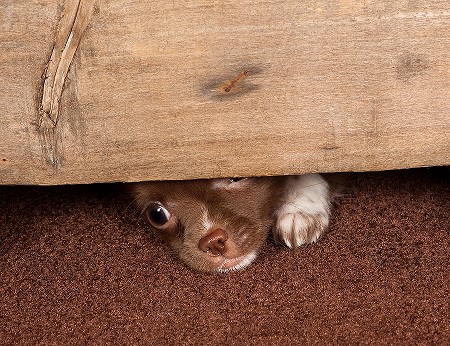
You would be astonished at the narrow gaps that a tiny dog can squeeze through.
Tiny dogs are not suited to houses with large dogs, infants, toddlers, or rough-and-tumble children.
- TINY dogs can be difficult to raise and train. You must walk a fine line being careful about their safety, yet requiring them to stand on their own four feet whenever possible. Spoiling a tiny dog (by carrying him around like a baby or making excuses if he acts rudely) can turn him into a neurotic, nasty creature.
This is precisely how tiny dogs get the reputation of being vile little beasts. Their owners made them that way.
- TINY dogs can be hard to housebreak. Their miniaturized bladder means they need to go to the bathroom frequently, and often the urge comes on them quickly. If they're free to sneak behind a chair to "go", they quickly develop the bad habit of "going" in the house.
Housebreaking a tiny dog is best done with a crate or pen. Either you commit to taking your tiny dog outside every hour or two (can be tough when the weather's bad, as tiny dogs dislike bad weather), or else you provide a litterbox inside his crate or pen. Some tiny dogs don't become housebroken for many months, and some are never fully housebroken.
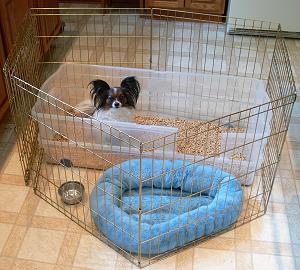
On the plus side, Papillons (pic above) and Toy Poodles are the quickest tiny breeds to pick up the concepts of housebreaking. But even in these bright breeds, youngsters are still physically hampered by their tiny organs.
Read more about my housebreaking program.
Are you sure you can keep a tiny dog safe? Can you commit to a firm housebreaking program that requires equal measures of stick-to-it-iveness and patience? Can you provide the discipline that tiny dogs need to prevent nasty, neurotic, or over-dependant behavior? If you're unsure, you might be better off with a SMALL dog instead of TINY.
SMALL DOGS
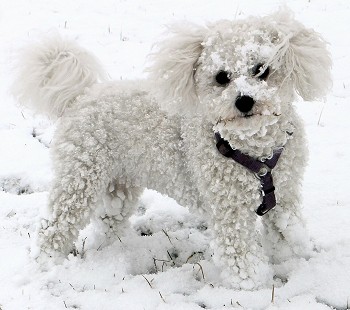
Small breeds, like this Bichon Frise, are sturdier than tiny breeds, but still need protection from injury.
SMALL dogs, generally speaking, weigh 10-20 pounds and stand 12-15 inches at the shoulder.
Examples of small dogs
- SMALL purebreds include lots of terriers, the Bichon Frise, Pug, Dachshund, Havanese, Lhasa Apso, Miniature Poodle, Miniature Schnauzer, Shih Tzu, and others. See all small breeds.
- SMALL crossbreds include the Maltichon (Maltese + Bichon Frise), Schnoodle (Schnauzer + Poodle), Schnorkie (Schnauzer + Yorkie), and others.
- SMALL mixed breeds may be found at shelters and rescue groups. But this size is attractive to many prospective owners, so small dogs tend to be adopted quickly.
Pros of small dogs
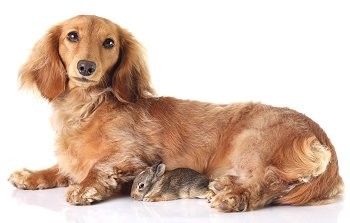
Dachshunds make terrific pets, but you need to protect them from damaging their unnaturally long back.
Like tiny dogs, SMALL dogs have full-fledged canine personalities packed into small bodies. They don't take up much room. They're easy to pick up and carry. They're easy to feed and clean up after. They're convenient to travel with.
And most small breeds enjoy a long (13-16 year) lifespan. However, a few small breeds have serious health problems that shorten their life expectancy. These are the Pug, Pekingese, Shih Tzu, Cavalier King Charles Spaniel, and English Toy Spaniel.
Cons of small dogs
- Compared to a tiny dog, a SMALL dog is easier to keep physically safe. And yet... small dogs can still be injured by larger dogs, or by jumping or falling off a stairwell, balcony, or deck. Make sure railings and fence openings are narrow enough that a small dog can't squeeze through.
It's understandable why a small dog might feel vulnerable with children running around, jumping, waving their arms, making noise, and so on. I don't recommend small dogs for young children unless your particular child is exceptionally gentle and respectful.
- Compared to a tiny dog, a SMALL dog is easier to keep mentally stable. And yet... small dogs should not be lugged around in your arms – whenever possible, they should be standing on their own four feet. Spoiling a small dog (by treating him like a baby or by smiling or laughing when he acts rudely) can turn him into a neurotic or nasty creature.
- SMALL dogs can be hard to housebreak. Like tiny dogs, small dogs have a miniaturized bladder that requires frequent bathroom visits, especially when they're young. If loose in the house, a small dog can sneak behind a chair to "go", thus developing the bad habit of "going" in the house.
The most difficult small breeds to housebreak are the Bichon Frise, Coton de Tulear, Havanese, Pug, and Shih Tzu. In my experience, the easiest small breed to housebreak is the Miniature Poodle.
Are you interested in small dogs, but have young kids? Keep reading! I recommend midsize, medium, and large dogs for families with children.
MIDSIZE DOGS
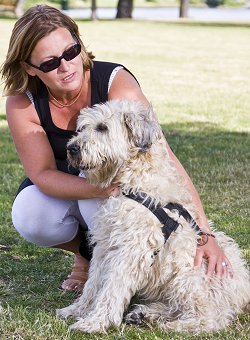
Midsize dogs, like this Wheaten Terrier, are larger than small dogs, but smaller than medium dogs. Most midsize breeds are okay with older children who are well-behaved.
MIDSIZE dogs, generally speaking, are between SMALL and MEDIUM, weighing 20-40 pounds and standing 15-18 inches at the shoulder.
Examples of midsize dogs
- MIDSIZE purebreds include Beagles, Cocker Spaniels, French Bulldogs, Shelties, Welsh Corgis, and others. See all midsize breeds..
- MIDSIZE crossbreds include the Cockapoo (Cocker Spaniel + Miniature Poodle), Schnoodle (Miniature Schnauzer + Miniature Poodle), and Puggle (Pug + Beagle).
- MIDSIZE mixed breeds may be found at shelters and rescue groups. Many of these include beagle, spaniel, and/or terrier genes.
Pros of midsize dogs
- MIDSIZE is the smallest size I usually recommend for families with energetic or tough-and-tumble children. Medium and large dogs are even better for children, but most medium and large dogs need a great deal more exercise.
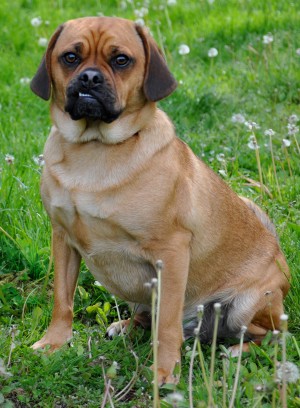
Puggle – a midsized cross between a Pug and a Beagle. Loads of shedding!
- MIDSIZE dogs share most of the pros of small dogs. They don't take up much room. They're easy to feed and clean up after. They're convenient to travel with. And they usually enjoy a good lifespan of 12-15 years.
- Another plus for these MIDSIZE breeds is that housebreaking is not usually a problem – with the exception of Beagles, French Bulldogs, and some Cocker Spaniels.
Cons of midsize dogs
- Some dogs in this size range are too stocky for some owners to easily pick up.
- Quite a few breeds in this size range are heavy shedders, while others are light to moderate shedders. So if shedding matters to you, be careful with your choices!
MEDIUM-SIZE DOGS
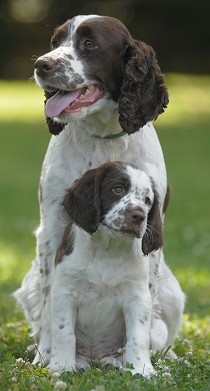
Although lots of families would like a medium-size dog, like this English Springer Spaniel, most medium-size purebreds need too much exercise and mental stimulation.
MEDIUM-SIZE dogs, generally speaking, weigh 40-60 pounds and stand 18-22 inches at the shoulder.
Examples of medium-size dogs
- MEDIUM-SIZE purebreds include Australian Shepherds, Border Collies, Chinese Shar-peis, American Staffordshire Terriers, Siberian Huskies, and others. See all medium-size breeds.
- MEDIUM-SIZE crossbreds include the Labradoodle (Labrador Retriever + Poodle) and Goldendoodle (Golden Retriever + Poodle).
- MEDIUM-SIZE mixed breeds are found at shelters and rescue groups. Most of these dogs have pit bull, spitz, and/or spaniel genes.
Pros of medium-size dogs
- A good match for owners who enjoy a lot of outdoor activities
- Sturdy enough for most respectful children
- A pretty good lifespan of 11-13 years. However, Chinese Shar-Peis can die early from inherited kidney disease, while Welsh Springer Spaniels can die early from a severe form of inherited epilepsy.
- Easy to housebreak. In this size range, I usually encounter issues only with Basset Hounds and English Bulldogs.
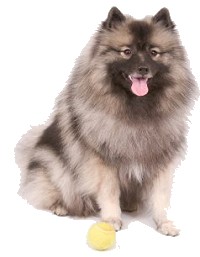
The Keeshond is a nice family dog who needs moderate exercise. Also moderate trimming... and lots of brushing. Sheds? YES!
Cons of medium-size dogs
Unfortunately, most purebreds and crossbreds in this size range are high-energy dogs. They need significant exercise and mental stimulation to prevent boredom and subsequent behavior problems.
Medium-size breeds that don't need a lot of exercise are Basset Hounds (moderate exercise), English Bulldogs (minimal exercise), and Keeshonds (moderate exercise).
Be careful.... lots of heavy shedders in this size range!
LARGE DOGS
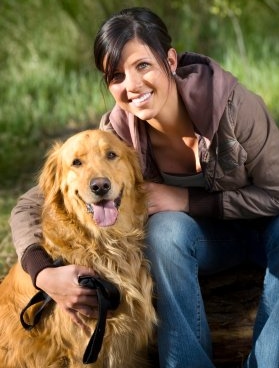
Large breeds, like this Golden Retriever, make excellent family dogs if you have a nice fenced yard where you and your dog can play vigorous games like fetch and hide n' seek. Don't forget long daily walks!
LARGE dogs, generally speaking, weigh 60-90 pounds and stand 22-26 inches at the shoulder.
Examples of large dogs
- LARGE purebreds include Labrador and Golden Retrievers, German Shepherds, Airedales, Boxers, Collies, Dalmatians, Dobermans, Irish Setters, and others. See all large breeds.
- LARGE crossbreds usually include a Standard Poodle as one of the breeds. You'll see a Standard Poodle crossed with a Labrador Retriever (Labradoodle), Golden Retriever (Goldendoodle), German Shepherd (Shepadoodle), or Bernese Mountain Dog (Bernedoodle). Standard Poodles are used as one parent because they're non-shedding, which may help knock the heavy shedding of the other breed down to average shedding.
- LARGE mixed breeds fill animal shelters and rescue groups almost everywhere in our country. DNA tests have shown that most of these large mixed breeds have genes from pit bulls, rottweilers, shepherds, collies, and/or spitz breeds.
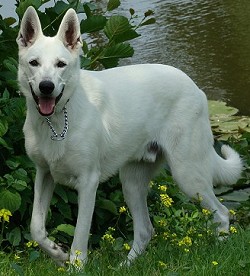
White Shepherds are great family dogs as long as you can provide for all their needs.
Pros of large dogs
Most LARGE dogs are well-matched with active owners who love the outdoors.
Many large breeds are great with young (but respectful) children.
Housebreaking is not a problem.
Bad guys are less willing to break into homes with a large dog.
Cons of large dogs
- LARGE dogs need thorough training and plenty of exercise and mental stimulation.
- If you stick them in the back yard and hope they'll exercise and train themselves out there, you're not going to like how that turns out...
- Large dogs require more food and produce more waste.
- Large dogs are more vulnerable to serious and expensive-to-treat health problems such as joint diseases, heart diseases, and cancer.
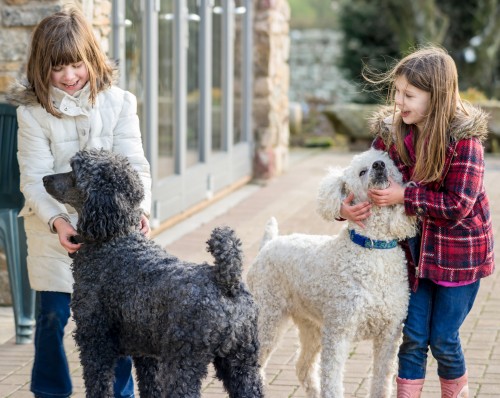
Standard Poodles are nice family dogs when handled calmly and gently. Non-shedding, but need a lot of exercise. Fences need to be high for these athletic jumpers.
Most dogs in this size range live 10-13 years.
But certain large breeds are susceptible to inherited health problems (usually cancer, heart disease, or autoimmune disease) that can drastically shorten their lifespan. In these breeds, many dogs only live to 6 or 7 years old.
- Akita – bloat (gastric torsion); cancer; autoimmune diseases
- Bernese Mountain Dog – cancer
- Boxer – multiple cancers; multiple heart diseases
- Dalmatian – urinary disease
- Doberman Pinscher – heart disease
- Flat-Coated Retriever – cancer
- German Shepherd – bloat (gastric torsion); multiple autoimmune diseases
- Golden Retriever – multiple cancers; multiple heart diseases
- Labrador Retriever – cancer; heart disease; neurological/neuromuscular diseases
- Rottweiler – bone cancer; autoimmune diseases; bloat (gastric torsion)
- Standard Poodle – autoimmune diseases; bloat (gastric torsion)
- Weimaraner – bloat (gastric torsion)
GIANT DOGS
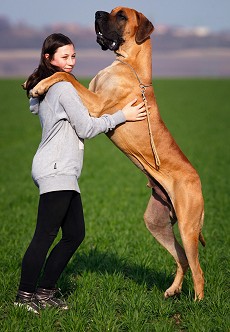
GIANT breeds, like this Great Dane, are not simply "bigger" LARGE breeds. Giant breeds have a complex metabolism and very special needs that you must be able to handle if both of you are going to be happy.
Giant dogs, generally speaking, weigh 100+ pounds and/or stand 26+ inches at the shoulder.
Examples of giant dogs
- GIANT purebreds include Great Danes, Irish Wolfhounds, Mastiffs, Newfoundlands, Saint Bernards, and others. See all giant breeds.
- GIANT crossbreds are occasionally offered for sale. For example, the American Bandogge is a cross of any Mastiff breed (Neapolitan, Bullmastiff, Old English Mastiff) with any Bulldog breed (American Bulldog, American Pit Bull Terrier). Or... cross a Great Pyrenees with a Bernese Mountain Dog and the pups are called "Great Bernese".
- GIANT mixed breeds are no strangers to animal shelters and rescue groups, often given up by people who discovered they couldn't deal with such a huge animal.
Pros and cons of giant dogs
- Interestingly, because of their slower-moving bulk and slower metabolism, GIANT dogs require less exercise than large dogs. In fact, you need to be very careful to limit the exercise of a giant breed puppy or adolescent, as their growing bones are fragile and can be irreparably damaged by too much vigorous exercise.
- Many giant dogs are great with young (respectful) children.
- The size and appearance of giant dogs may dissuade bad guys from bothering you.
- Giant dogs make impressive family companions... IF you have enough space in your home, yard, and car... and IF you have the money for all the meat these dogs require... and IF you commit to training right from Day One... and IF you have plenty of patience for how slowly these dogs mature and the giant messes they can make while they're maturing.
By "messes" I mean not only the amount of waste they excrete, but also the massive destructive chewing when bored, and the slobbering/drooling of some giant breeds.
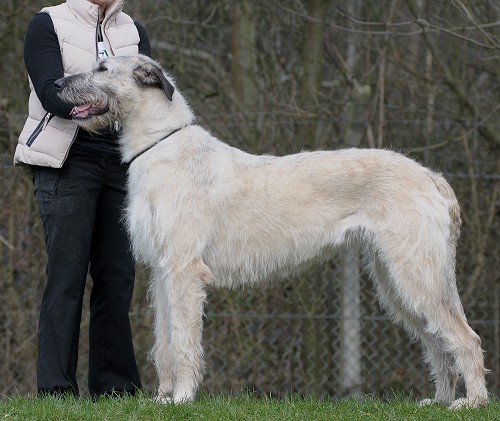
The life expectancy of an Irish Wolfhound is very short.
The lifespan of giant breeds – unfortunately, it's short.
Giant breeds mature very slowly. For their first 3 years, they're big puppies/teenagers. They're bouncy and clumsy and tend to knock things over.
Then they settle into calmer, dignified adults for another 2 or 3 years.
Then their bones and joints break down, their heart weakens, or they develop cancer. Or all of the above.
- The typical lifespan of an Irish Wolfhound is 6-8 years.
- Typical lifespan of an Old English Mastiff, Great Dane, Greater Swiss Mountain Dog, or Leonberger is 6-10 years.
- Typical lifespan of a Bloodhound or Bullmastiff is 7-9 years.
- Typical lifespan of a Dogue de Bordeaux, Newfoundland, or St. Bernard is 8-10 years.
- Typical lifespan of a Cane Corso, Great Pyrenees, Neapolitan Mastiff, or Scottish Deerhound is 8-11 years.
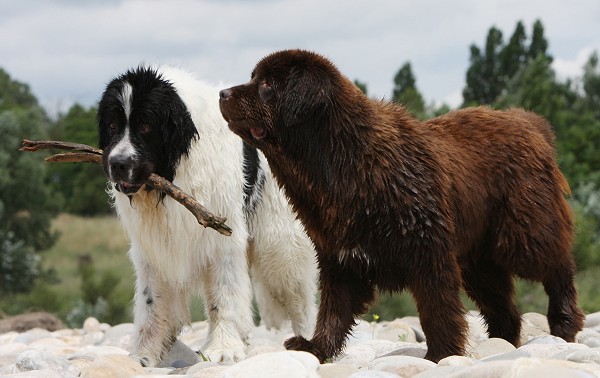
Newfoundlands look most familiar in black. But they also come in particolor (called landseer) or brown (called bronze). These big guys have mastered the arts of shedding, drooling, and slobbering!
Can you provide the space, control, and patience that GIANT dogs need? Can you pay for their health problems as they mature? Are you prepared for their short lifespan? If not, you might be better off with a LARGE dog.
My best-selling books – now available FREE on my website
 Respect Training For Puppies: 30 seconds to a calm, polite, well-behaved puppy is for puppies 2 to 18 months old. Your puppy will learn the 21 skills that all family dogs need to know. Click here to read for free.
Respect Training For Puppies: 30 seconds to a calm, polite, well-behaved puppy is for puppies 2 to 18 months old. Your puppy will learn the 21 skills that all family dogs need to know. Click here to read for free. Teach Your Dog 100 English Words is a unique Vocabulary and Respect Training Program that will teach your adult dog to listen to you and do what you say. Click here to read for free.
Teach Your Dog 100 English Words is a unique Vocabulary and Respect Training Program that will teach your adult dog to listen to you and do what you say. Click here to read for free. 11 Things You Must Do Right To Keep Your Dog Healthy and Happy helps your dog live a longer, healthier life. Get my honest advice about all 11 Things before you bring home your new puppy, because some mistakes with early health care cannot be undone. Click here to read for free.
11 Things You Must Do Right To Keep Your Dog Healthy and Happy helps your dog live a longer, healthier life. Get my honest advice about all 11 Things before you bring home your new puppy, because some mistakes with early health care cannot be undone. Click here to read for free.
